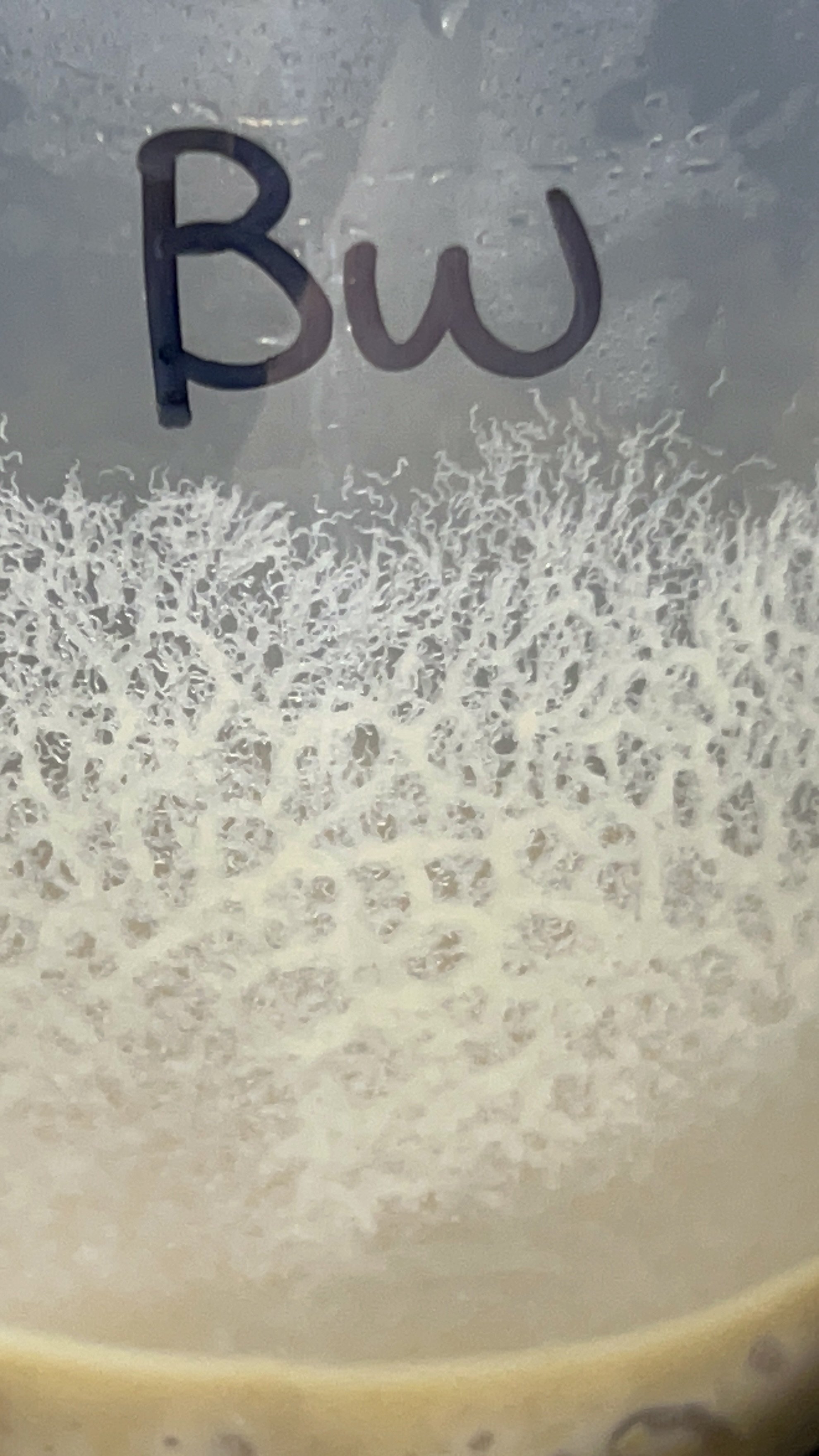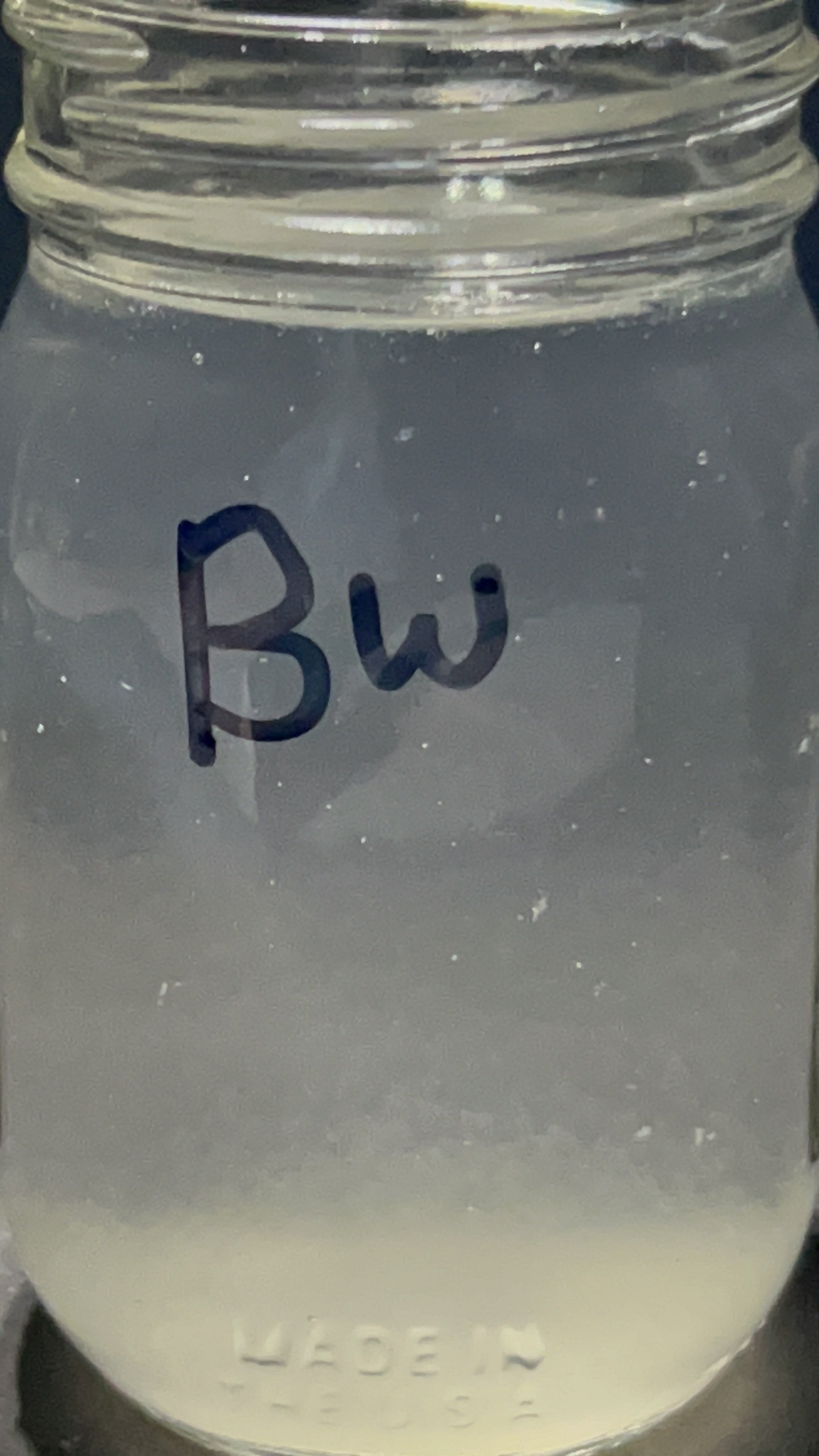 Image 1 of 2
Image 1 of 2

 Image 2 of 2
Image 2 of 2



Banana Worm (Large Var.) in Oat Media +12 oz
Banana worms (Panagrellus nepenthicola) are one of the smallest live foods available for fish fry, making them ideal for species with very small mouths, such as bettas, killifish, rainbowfish, and gouramis.
However, this colony of banana worms is larger and more dense than micro worms. Banana worms are perfect as a first food right after hatching, helping fry get the nutrition they need during their most fragile stage.
This +12 oz live culture is grown in an oatmeal and yeast-based medium and teems with healthy, actively reproducing banana worms. Easy to maintain, odor-free when managed properly, and highly productive, banana worm cultures provide a low-maintenance, self-replenishing food source for serious breeders and hobbyists alike. No special equipment is needed; with basic care, the culture can last for weeks and be restarted indefinitely.
Ideal For:
Bettas, killifish, gouramis, rainbowfish fry
Breeding projects requiring tiny live food
Low-maintenance, shelf-stable fry food solution
Storage & Conditions:
Container: Transfer to a clean plastic container (taller is better)
Temperature: Room temperature (50°F–78°F / 10°C–25°C)
Lighting: Indirect light is fine; avoid direct sunlight or extreme heat.
Air: Culture needs air exchange – keep the lid loose or use a breathable cover.
Feeding & Maintenance:
When production slows after 1–3 weeks, refresh the media by discarding half of the culture (it can be used to create a new culture or discarded in the trash).
Add oat media and dry activated yeast.
How to Harvest & Feed:
Scrape worms from the sides of the container using a cotton swab, paint brush, or finger.
Rinse into a small cup with dechlorinated water or use directly.
Drop into the fry tank—These small worms sink quickly and survive in an aquarium for 2 to 6 hours.
Feed the culture with yeast after harvesting.
To start a new culture:
Prepare the Oat media by soaking organic oats in dechlorinated water for 12 hours.
Spread hydrated oats (~1/4 inch thick) in a clean plastic container.
Add one teaspoon of dry activated yeast.
Transfer a scoop of the old culture as a starter.
Store at room temperature.
Worms are sorted by size from smallest to largest, and by their characteristics.
Vinegar Eels: These are the smallest in my store. They are free-swimming worms that can swim at the water's surface.
Walter Worms: These worms are small and sink slowly. They survive in an aquarium for 2 to 6 hours.
Micro Worms: Another type of small worm, these also sink and survive 2 to 6 hours in the aquarium.
Banana Worms (Large variety): These small worms sink quickly and survive in an aquarium for 2 to 6 hours.
Banana worms (Panagrellus nepenthicola) are one of the smallest live foods available for fish fry, making them ideal for species with very small mouths, such as bettas, killifish, rainbowfish, and gouramis.
However, this colony of banana worms is larger and more dense than micro worms. Banana worms are perfect as a first food right after hatching, helping fry get the nutrition they need during their most fragile stage.
This +12 oz live culture is grown in an oatmeal and yeast-based medium and teems with healthy, actively reproducing banana worms. Easy to maintain, odor-free when managed properly, and highly productive, banana worm cultures provide a low-maintenance, self-replenishing food source for serious breeders and hobbyists alike. No special equipment is needed; with basic care, the culture can last for weeks and be restarted indefinitely.
Ideal For:
Bettas, killifish, gouramis, rainbowfish fry
Breeding projects requiring tiny live food
Low-maintenance, shelf-stable fry food solution
Storage & Conditions:
Container: Transfer to a clean plastic container (taller is better)
Temperature: Room temperature (50°F–78°F / 10°C–25°C)
Lighting: Indirect light is fine; avoid direct sunlight or extreme heat.
Air: Culture needs air exchange – keep the lid loose or use a breathable cover.
Feeding & Maintenance:
When production slows after 1–3 weeks, refresh the media by discarding half of the culture (it can be used to create a new culture or discarded in the trash).
Add oat media and dry activated yeast.
How to Harvest & Feed:
Scrape worms from the sides of the container using a cotton swab, paint brush, or finger.
Rinse into a small cup with dechlorinated water or use directly.
Drop into the fry tank—These small worms sink quickly and survive in an aquarium for 2 to 6 hours.
Feed the culture with yeast after harvesting.
To start a new culture:
Prepare the Oat media by soaking organic oats in dechlorinated water for 12 hours.
Spread hydrated oats (~1/4 inch thick) in a clean plastic container.
Add one teaspoon of dry activated yeast.
Transfer a scoop of the old culture as a starter.
Store at room temperature.
Worms are sorted by size from smallest to largest, and by their characteristics.
Vinegar Eels: These are the smallest in my store. They are free-swimming worms that can swim at the water's surface.
Walter Worms: These worms are small and sink slowly. They survive in an aquarium for 2 to 6 hours.
Micro Worms: Another type of small worm, these also sink and survive 2 to 6 hours in the aquarium.
Banana Worms (Large variety): These small worms sink quickly and survive in an aquarium for 2 to 6 hours.
